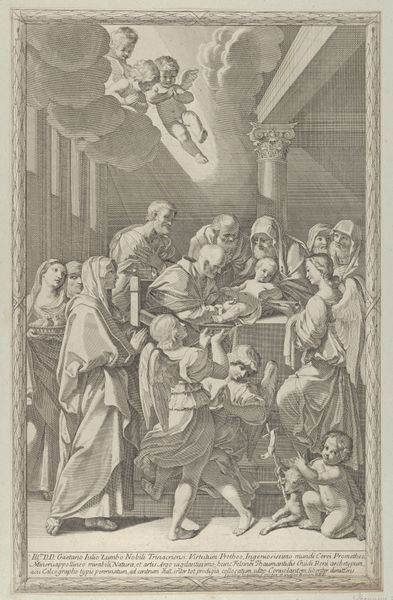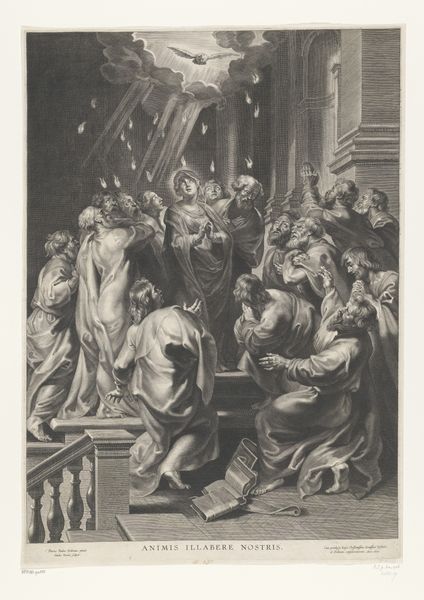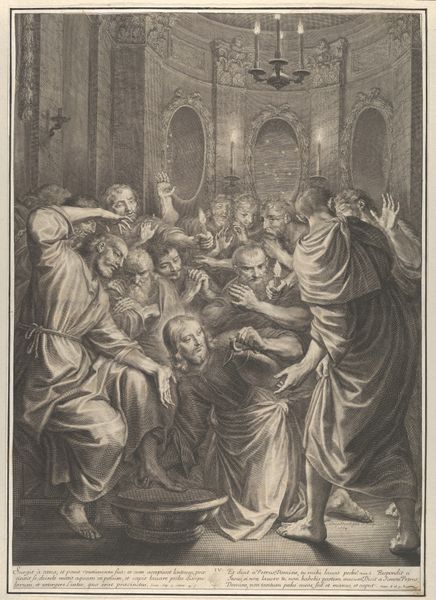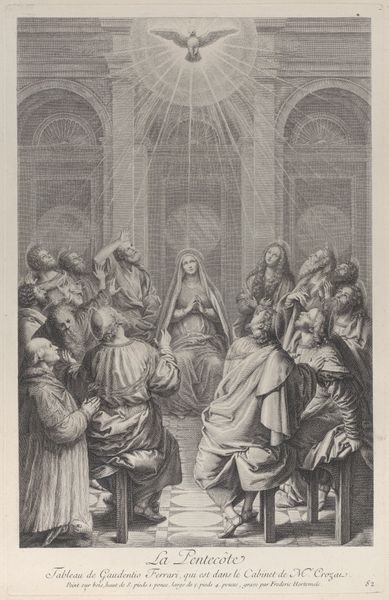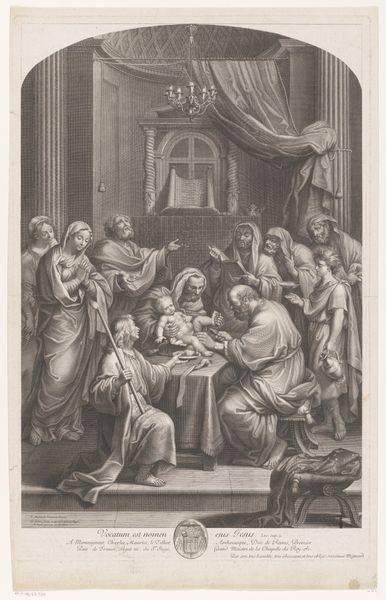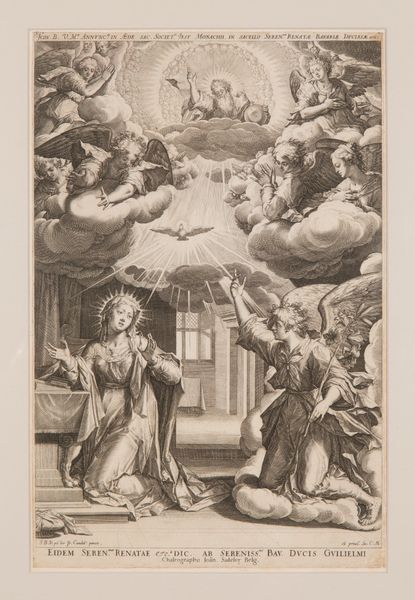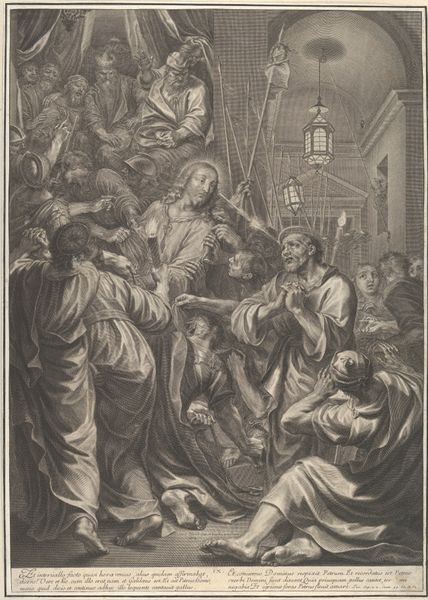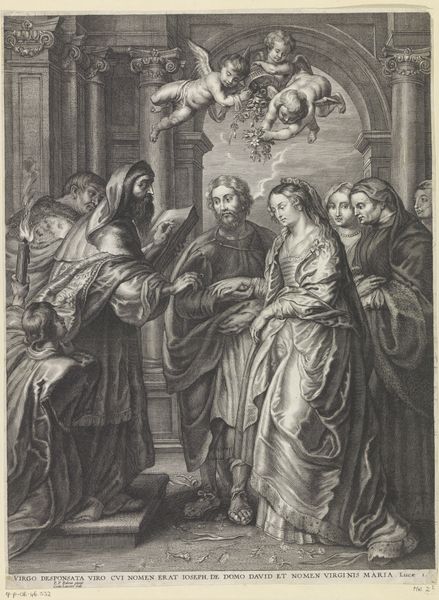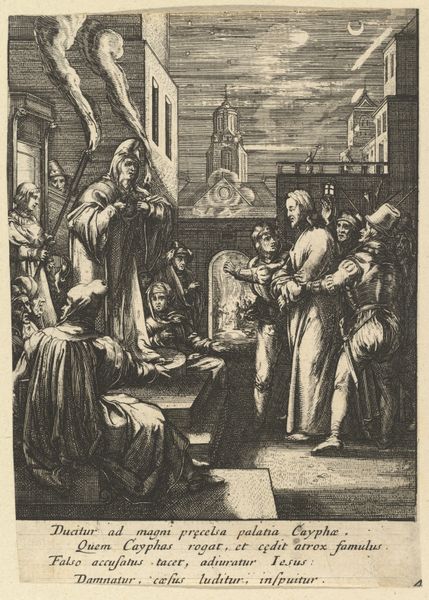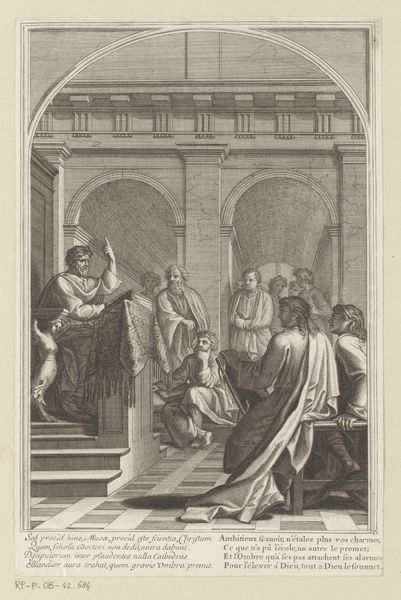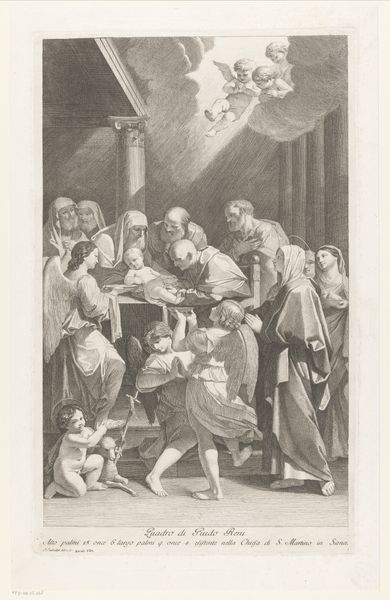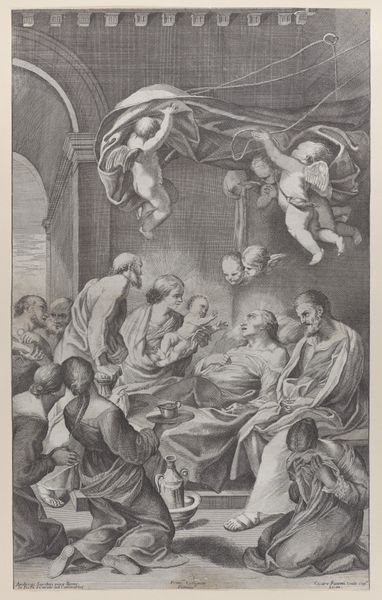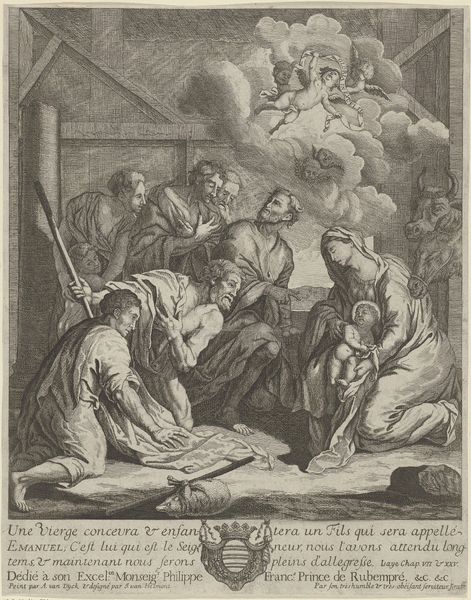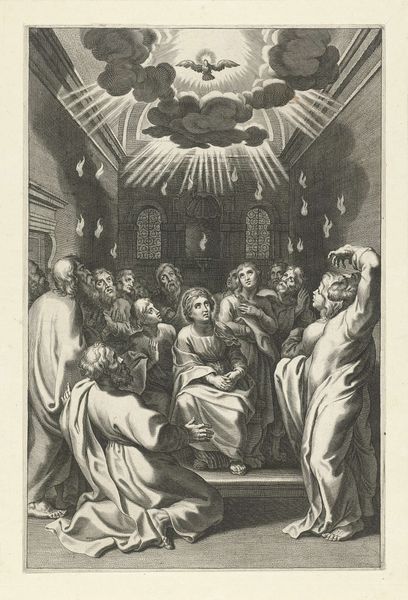
The birth of the Virgin; woman seated with an infant in her lap, numerous women surrounding her, angels above, after Reni 1677
0:00
0:00
drawing, print, engraving
#
drawing
#
narrative-art
#
baroque
# print
#
figuration
#
portrait drawing
#
history-painting
#
italian-renaissance
#
engraving
#
virgin-mary
#
angel
Dimensions: Sheet (Trimmed): 21 15/16 × 17 13/16 in. (55.7 × 45.2 cm)
Copyright: Public Domain
Editor: This is "The Birth of the Virgin," a 1677 engraving by Etienne Picart, after Guido Reni, currently held at The Met. The scene feels quite busy, full of figures tending to the newborn, but there’s also a stillness, almost like a posed tableau. How would you interpret this work, considering its historical context and material production? Curator: Well, I immediately see the labour inherent in creating an engraving of this scale and complexity. Consider the material: the copper plate, the tools, the skill required to translate Reni's painting into this print form. Each line represents a deliberate act of production. How do you think the materiality affects our perception of the subject, the birth of the Virgin? Editor: I guess seeing it as an engraving emphasizes the reproduction aspect. It makes me think less about a singular divine event and more about its dissemination, its accessibility to a wider audience through printed matter. Does the shift from painting to print change its social role? Curator: Precisely. Prints allowed religious narratives to circulate beyond the elite circles who could commission paintings. Think about the engraver's role as a skilled labourer facilitating this cultural distribution. Is it ‘high art’ or craft? Or is that boundary itself being challenged here by the reproductive nature of the medium? And who would be commissioning this, and why? The inscription refers to Carlo le Brun, another artist, suggesting artistic patronage networks at work. Editor: I see, it's like the print democratizes the image but simultaneously relies on a whole system of labour and patronage to even exist. Curator: Exactly! It highlights that the spiritual experience represented isn't detached from material conditions. We can analyze this image through the lens of its creation and consumption. Editor: This makes me rethink what I initially saw. Thanks; it is amazing how much more comes through the work by thinking of the materiality. Curator: Absolutely! And understanding the social context of its production is just as crucial.
Comments
No comments
Be the first to comment and join the conversation on the ultimate creative platform.
